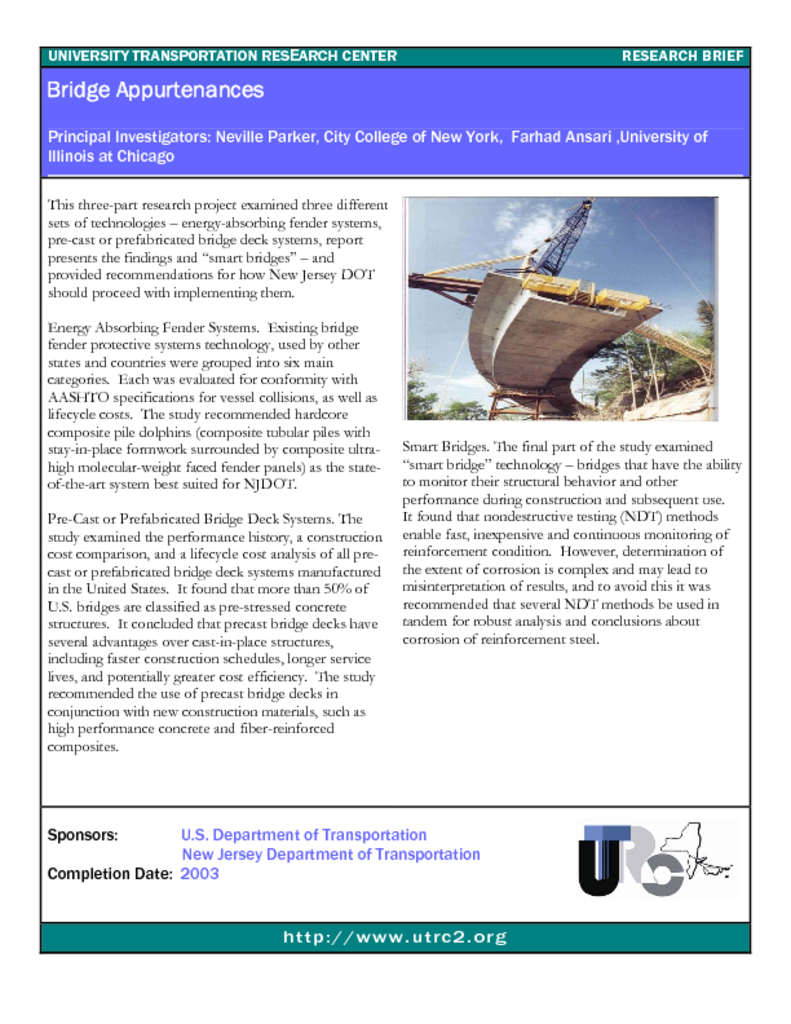This three-part research project examined three different sets of technologies ? energy-absorbing fender systems, pre-cast or prefabricated bridge deck systems, report presents the findings and 'smart bridges' ? and provided recommendations for how New Jersey DOT should proceed with implementing them.
Energy Absorbing Fender Systems. Existing bridge fender protective systems technology, used by other states and countries were grouped into six main categories. Each was evaluated for conformity with AASHTO specifications for vessel collisions, as well as lifecycle costs. The study recommended hardcore composite pile dolphins (composite tubular piles with stay-in-place formwork surrounded by composite ultra-high molecular-weight faced fender panels) as the state-of-the-art system best suited for NJDOT.
Pre-Cast or Prefabricated Bridge Deck Systems. The study examined the performance history, a construction cost comparison, and a lifecycle cost analysis of all pre-cast or prefabricated bridge deck systems manufactured in the United States. It found that more than 50% of U.S. bridges are classified as pre-stressed concrete structures. It concluded that precast bridge decks have several advantages over cast-in-place structures, including faster construction schedules, longer service lives, and potentially greater cost efficiency. The study recommended the use of precast bridge decks in conjunction with new construction materials, such as high performance concrete and fiber-reinforced composites.
Smart Bridges. The final part of the study examined 'smart bridge' technology ? bridges that have the ability to monitor their structural behavior and other performance during construction and subsequent use. It found that nondestructive testing (NDT) methods enable fast, inexpensive and continuous monitoring of reinforcement condition. However, determination of the extent of corrosion is complex and may lead to misinterpretation of results, and to avoid this it was recommended that several NDT methods be used in tandem for robust analysis and conclusions about corrosion of reinforcement steel.
Publication Category




